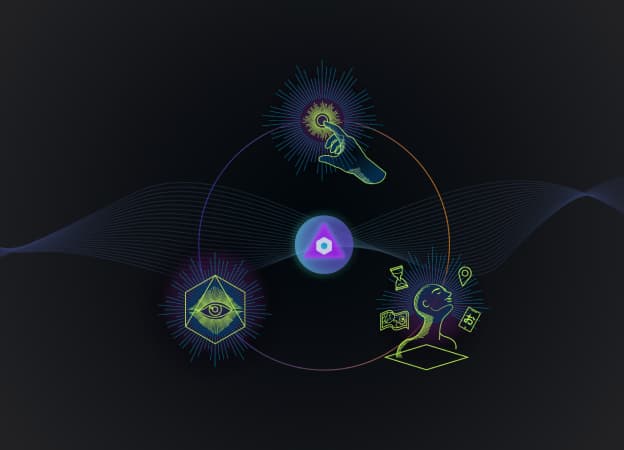I once strongly believed that the only effective way to get real-time collaboration was to bring people together in a room. My thinking was that technology is great, but it can never replace face-to-face interactions.
I’ve seen way too many collaboration technology failures over the years. Let’s roll back the mists of time for a few examples:
-
In the early 1990s, the services company I worked for implemented ISDN communications technology (for data and video over the phone lines) between its offices, and we set up a “virtual whiteboard” system for brainstorming sessions. We then offered free ISDN terminals to all of our major clients so we could engage in “real-time” collaboration and markup sessions for feedback on the technical illustrations we did for them. After the first few sessions, the novelty wore off and use rapidly dwindled to zero. No one wanted to take the time to arrange a call, walk to a dedicated terminal, switch it on and change the way they interacted.
-
In the early 2000s, the software company I worked for had a videoconferencing TV in the conference room that included cameras that tracked who was speaking. It was all very high-tech and leading-edge. But then the tracking mechanism broke and no one bothered to get it fixed, and soon the videoconferencing TV just became a TV used to watch the occasional football game.
Why Leave Your Desk?
What strikes me about those two failures is that they both involved people having to leave their regular workspaces and go to specific locations in order to use the technology. Why would anyone want to do that when it would be quicker to send an email or pick up the phone?
Of course, technology soon caught up with our desire to stay at our desks and use our own computers. Along came a variety of instant-messaging-type applications and versions of social media platforms for the workplace. Some of these were standalone tools; others were part of larger process and content management systems. These usually fell into the “good idea” technology category and they tended to be rolled out by corporate IT departments operating under the “deploy it and they will use it” philosophy.
In my experience, those deployments usually led to a 1-9-90 adoption model. That’s where about 1 percent of the people in the target user population fully adopt the new platform, another 9 percent occasionally contribute, and 90 percent just don’t care and carry on with established ingrained working practices — which usually means collaboration by exchanging emails.
When I worked for a disaster recovery startup focused on email protection, we estimated that 60 to 70 percent of a company’s intellectual property was locked up in its email system.
Bound By Company Restrictions
But I have seen a change. And like many other changes in workplace behavior, it hasn’t been driven by executive edicts or the adoption of new business practices, but by the expectations that people bring from home into the office.
The massive adoption of social media platforms and messaging applications, and the use of smartphone technology, audio assistants and AI interfaces has created a workforce that expects to interact and collaborate in the digital space with their colleagues the same way they do with their friends and family around the world.
But the stumbling block still tends to be corporate cultures that put up too many restrictions, and IT departments that look at collaboration platforms the same way they look at every other piece of software. This leads to comments such as “How come I can have a multithreaded real time conversation with relatives scattered around the world, but I can’t message my peers in another office without having to log in to three different systems?”
Culture Is Key
As with my examples above, it’s not the technology that’s the barrier to adoption, it’s the corporate culture.
My attitude about the capabilities of collaboration tools was turned on its head when I joined my current company, which was designed from the outset to be a “distributed enterprise” with employees located all across North and South America. Real-time digital collaboration is the life blood of this organization. Thanks to our use of collaboration tools — and our adoption of an agile working philosophy, which calls for regular sync-ups and full transparency — we can be well informed, fast and intelligent, both strategically and tactically, even though we’re not in the same office.
All of our software is cloud-based, which relieves the IT infrastructure team of the burden of handling installation, maintenance and updates. Instead of dealing with routine tasks, the infrastructure team can focus on process improvements and innovations.
We use Google G-Suite products to create all of our content, including documentation, marketing materials, client engagement documents and conference presentations. Content is also designed to be modular and reusable across the enterprise. We have a policy that stipulates that everything must be kept in a shared drive to allow for review and collaboration.
Yes Virginia, There Is Real-Time Collaboration
Yes, sometimes we need to limit revision cycles and restrict the number of people who can review a document; otherwise, content may be endlessly polished and never released. That means planning, roles and deadlines have become even more important. But compared to the old approach of sending documents back and forth via email for multiple “please review” cycles, it is much faster when two or more people can interactively fine-tune a presentation in real time (as I was doing with the CEO yesterday). We can directly measure the productivity gains.
We use the online conferencing platform Zoom for person-to-person communication, and having the video camera on is encouraged, so that we get that face-to-face interaction whenever possible.
And then there’s Slack, our messaging platform. I don’t think I’ve ever become such a big proponent of an application so quickly. Slack is our go-to choice for ad hoc conversations, brainstorming sessions, project updates and any other occasion when we need to pull teams together. We also use Slack to set up dedicated communication channels with partners and customers.
Because all this happens in a virtual distributed way, I have access to my virtual “office” and can communicate with my colleagues whenever I need to do so, via my laptop, tablet or phone. That’s a real plus when I’m on the road visiting clients or attending conferences.
It has taken a couple of decades, but I have been won over to the fact that real-time collaboration tools can really work. But one thing that’s clear is that real-time collaboration only happens within a culture that understands how the tools work and how they are best deployed, and builds its business processes around them.



